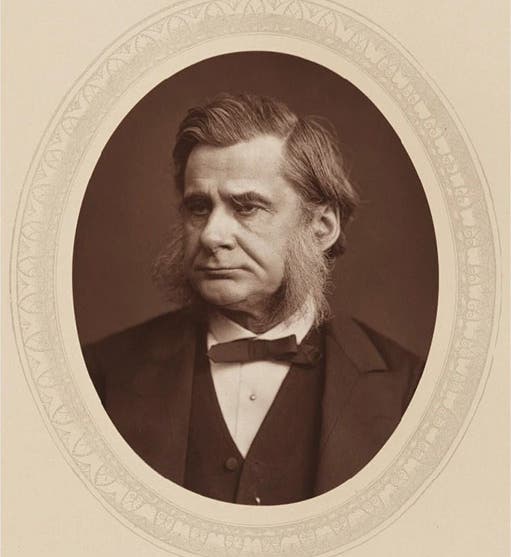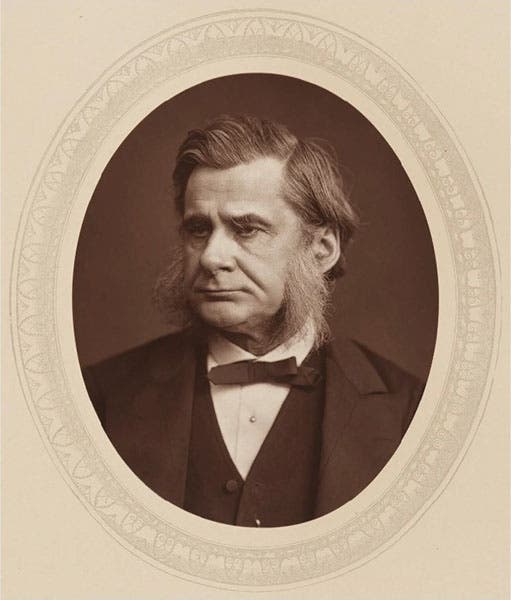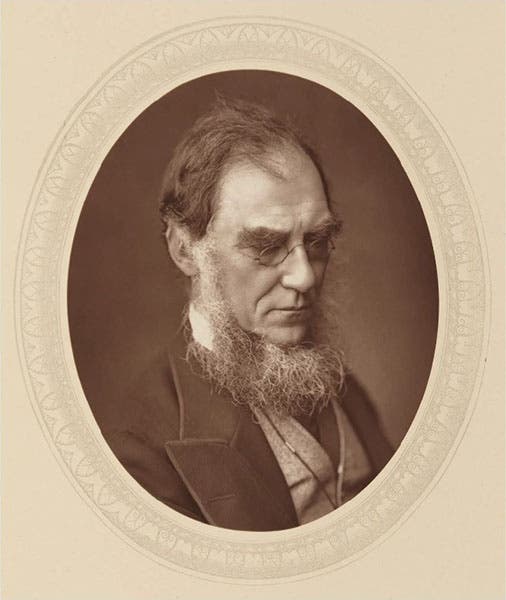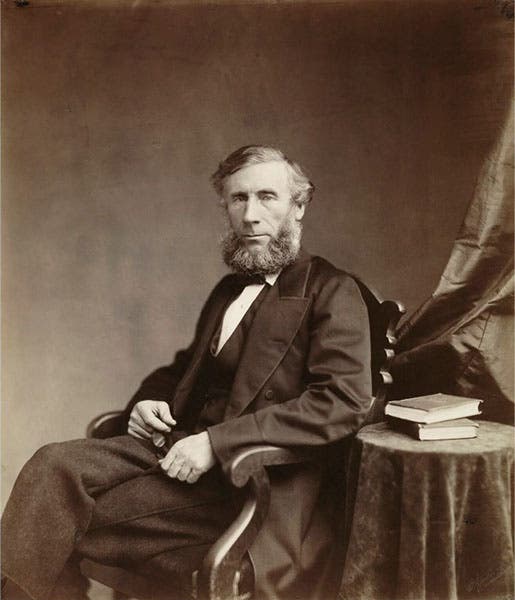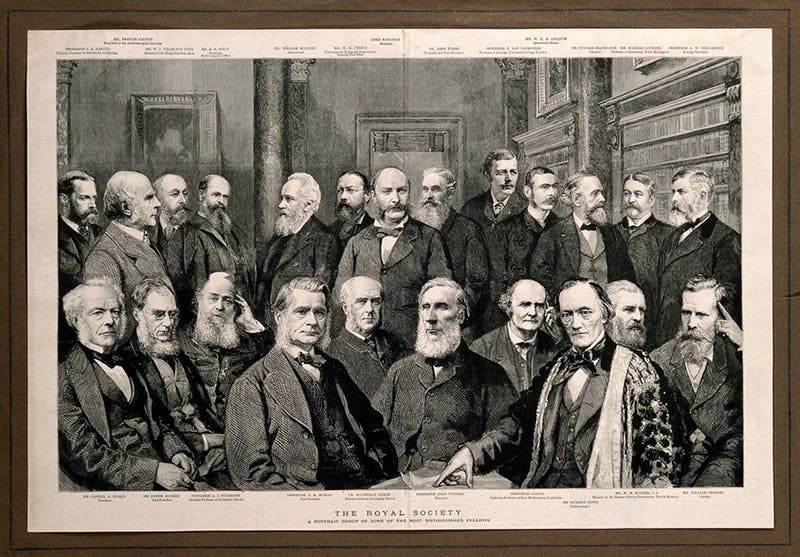Scientist of the Day - The X Club
The X Club, a dinner club founded by Thomas Henry Huxley, met for the first time on Nov. 3, 1864, at St. George's Hotel on Albemarle Street in London. The dinner guests, selected by Huxley, probably in consultation with other invitees, included some of the most prominent or soon-to-be-prominent scientists in Victorian England. Eight men met on that first November evening:
- Joseph Dalton Hooker, the most respected botanist of the day, and Charles Darwin’s closest friend
- John Tyndall, a physicist and alpinist, who wrote a variety of books on heat, light, and sound for the general public
- Edward Frankland, a chemist, who climbed Mont Blanc with Tyndall to see how well candles burned at altitude
- George Busk, an anthropologist who would determine that Gibraltar man was a Neanderthal, the second specimen known
- Herbert Spencer, the father of sociology (and ultimately, Social Darwinism)
- John Lubbock, the youngest member, an up-and-coming archaeologist who would coin the terms Paleolithic and Neolithic
- Thomas Hirst, a mathematician; and, of course:
- Thomas H. Huxley himself, comparative anatomist and defender of Darwin and evolution
At the second meeting, in December they were joined by:
- William Spottiswoode, a prominent publisher and mathematician
The nine members of the X Club had in common, someone said, a "devotion to science, pure and free, untrammelled by religious dogma". Huxley insisted that the only agenda was to guarantee that good friends kept in touch and did not drift apart, as friends often do. But all were supporters of Charles Darwin and his theory of evolution by natural selection, so in a sense, Darwin now had 9 bulldogs, instead of the one he used to have in Huxley. Many were religious, but all believed that religion (and especially religious dogma) had no place in science.
The X Club was not intended to be a political action committee, but it became so in the 1870s. Many of the members served as president of the Royal Society; others were treasurer and secretary. Five of the members were president of the British Association for the Advancement of Science, and others headed up other organizations, such as the Chemical Society and the Mathematical Society. They were a powerful group, and I expect the extent of their grip on Victorian science is discussed in detail in a recent book, The X Club: Power and Authority in Victorian Science, by Ruth Barton (2018), but for some reason, our Library missed acquiring the book when it came out, so I have not been able to read it. We will try to fill that lacuna shortly. I did admire the dust jacket, which has portraits of all nine members in a pleasing 3x3 array.
The X Club met once a month for nine months of the year, excepting the holiday months of July, August, and September. As it turned out, they met for almost 30 years, but since they decided early on not to accept new members, membership dwindled due to aging, until, by the 1890s, there were not many left. The last meeting, in March of 1893, was attended only by Hooker, Frankland, and Huxley.
I have written individual posts on all but Hirst and Lubbock, with a portrait at each post, so I have included here only portraits of Huxley, Hooker, Tyndall, and Frankland. But I did discover an interesting group portrait of the Royal Society in the Wellcome Collection in London (fifth image). It is dated 1885, and it is one of those artificial group portraits, where each individual is copied from an existing portrait, so they face all sorts of directions. But it is of interest here because four of the X Club members are included, with Hooker, Huxley, and Tyndall in the front row, and Frankland in the back on the right. You can see captions for all those portrayed in the Wikimedia version of this wood engraving.
William B. Ashworth, Jr., Consultant for the History of Science, Linda Hall Library and Associate Professor emeritus, Department of History, University of Missouri-Kansas City. Comments or corrections are welcome; please direct to ashworthw@umkc.edu.

